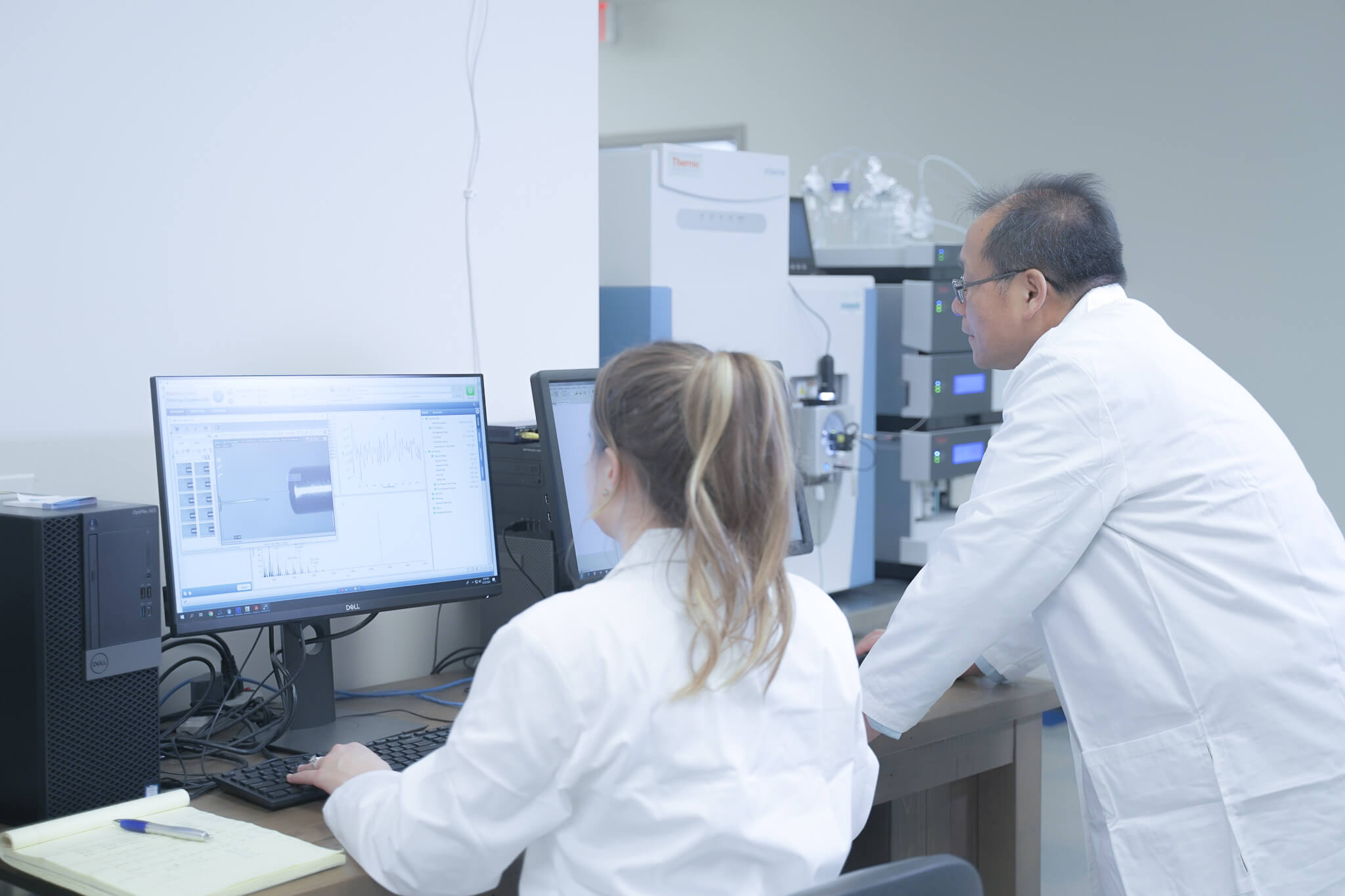Bioinformatic Analysis of Large Proteomics Datasets and Identification of Differential Expression of Proteins and Involved Pathways
Price: $1800 per data set of a paired group
Turnaround Time: 10 to 15 business days

Biological information flowing from the genome to proteome automatically regulates living cell status in response to internal or external signals. The genome encoding the proteome is relatively static, while the proteome is much more dynamic allowing the protein to orchestrate all biological processes precisely, ranging from central metabolism to cell structure, maintenance, and replication. It is speculated that all biological processes (on/off) are regulated and operated by the dynamics of proteins, such as modifications and changes in abundance. The regulation of different cellular functions has been categorized into a number of pathways, such as the Wnt signaling pathway and the TGF signaling pathway. In each pathway, the components are generally named according to their function, including ligands, receptors, activating regulators, inhibitory regulators, and effectors. To measure the activation strength of a pathway, the protein molecules that belong to ligands, receptors, activating regulators, or inhibitory regulators are grouped as the pathway protein ontology chain (POC), and their relative abundances (ppm) are summed. Based on the summed abundance of each POC, the activation strength or activation status of a pathway can be compared between two proteome profiles.
Poochon developed a novel pathway tool called PROMICPATH using algorithms for protein abundance variation and protein function grouping based pathway analysis. PROMICPATH allows for customized pathway analysis, as well as common pathway analysis, which analyzes 42 common pathways. To ensure data integrity and reliability, PROMICPATH uses 10 groups of 400 housekeeping proteins to evaluate the completeness and variability of a proteome profile.